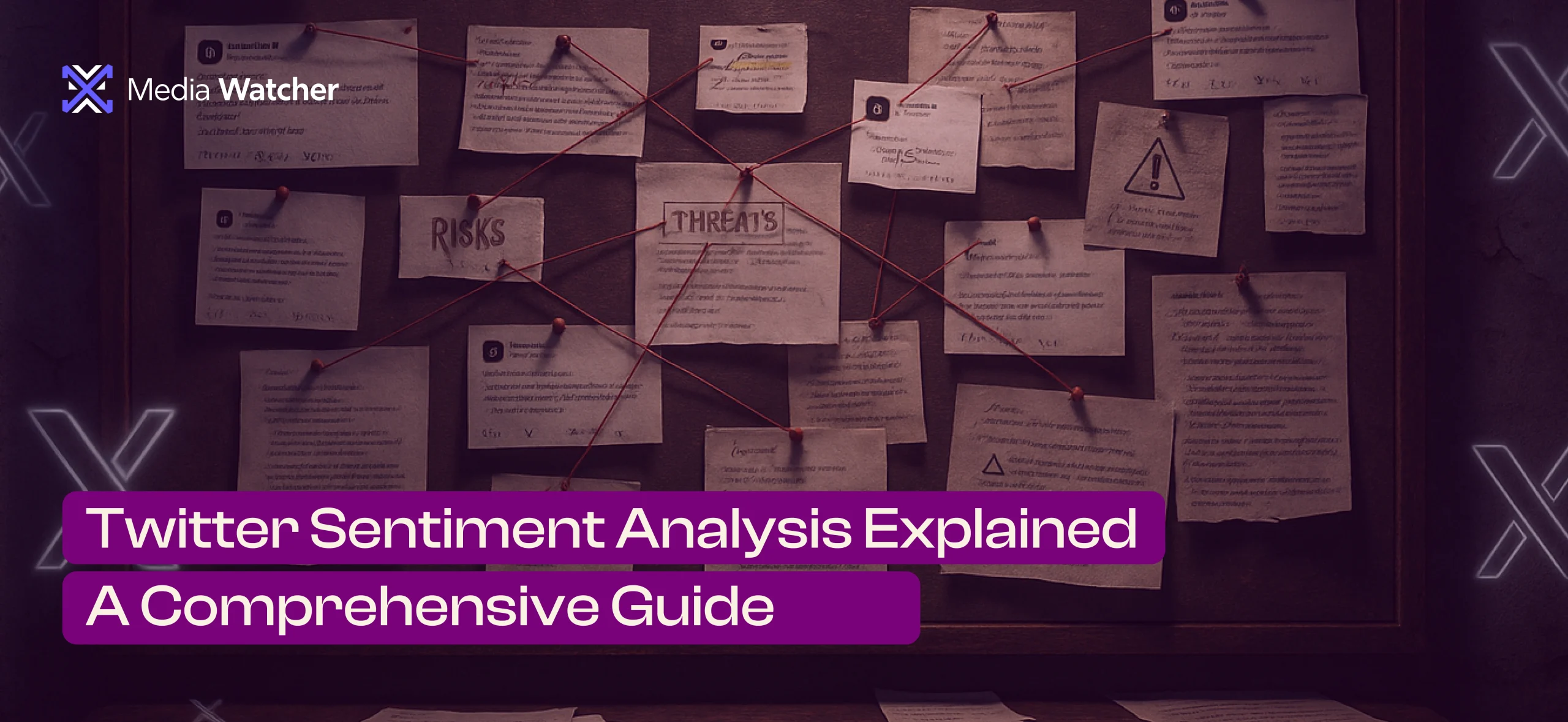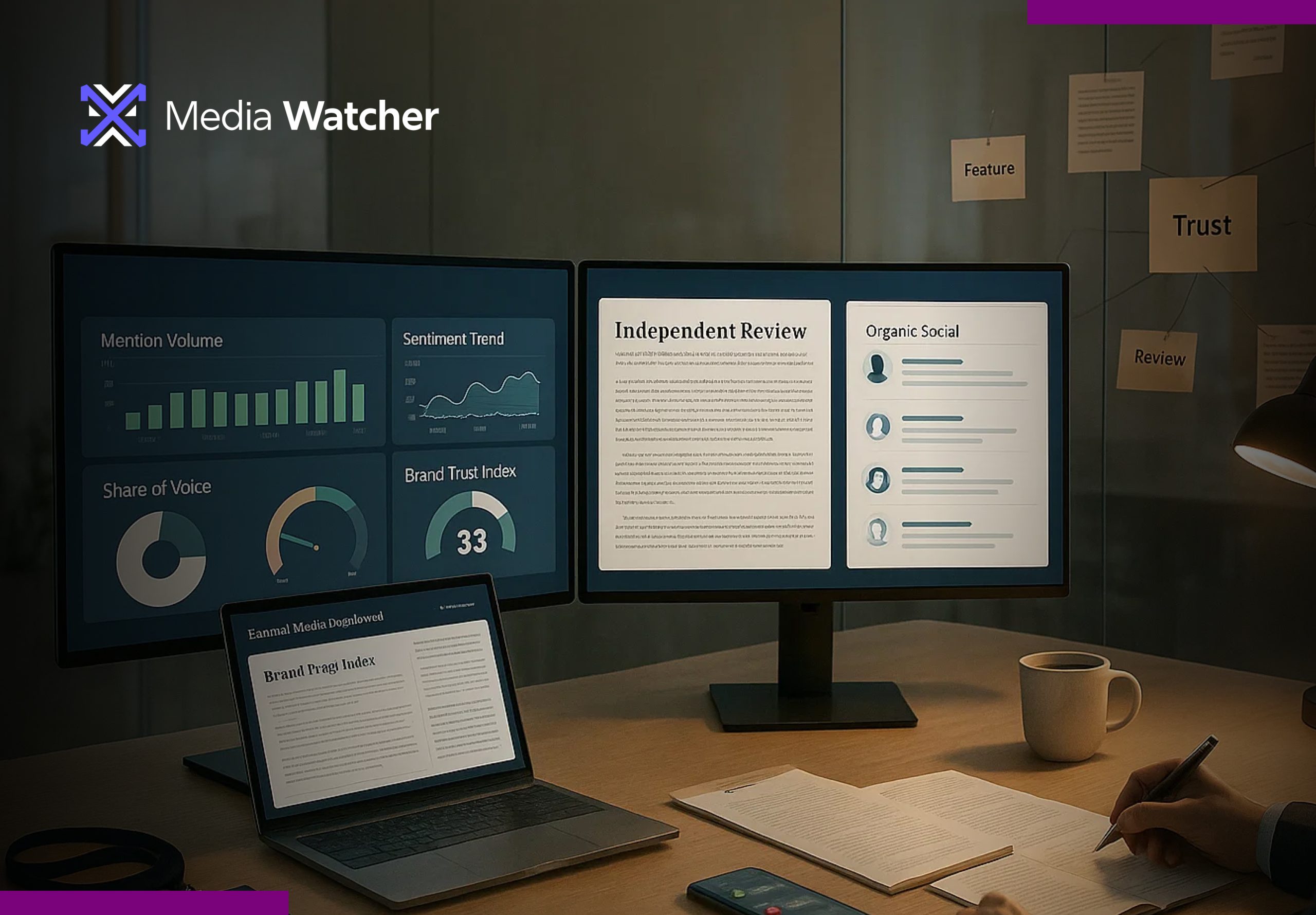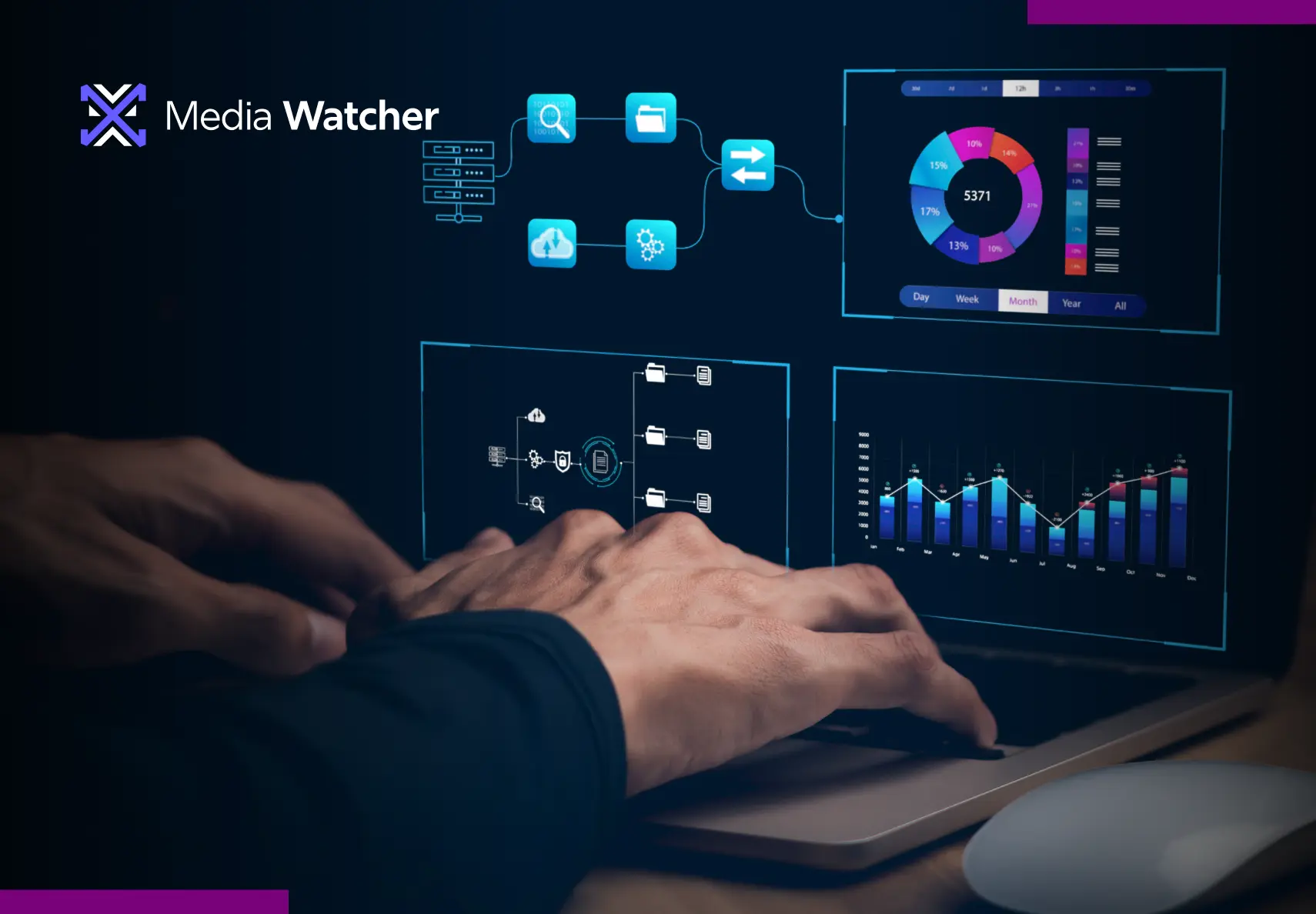Since its launch in 2006, Twitter (X), often branded as the “town hall of social media,” has become the go-to forum where the public shares opinions through tweets and trending hashtags.
A tweet posted on the platform has the potential to shape the public’s narratives, which can either praise a stakeholder or ignite a social movement. This expressive power has made Twitter not only the hub for diverse opinions but also a frequent target of censorship by undemocratic and hybrid regimes.
Organizations across various sectors use Twitter to analyze tweets to understand public sentiments surrounding key events. Analyzing sentiment on Twitter has become essential not just for campaign and reputation management but also for assessing policy reactions, public discourse, and market sentiment in real-time.
What is Twitter Sentiment Analysis?
Twitter sentiment analysis (TSA) is about assessing the user’s emotional behaviors and perspectives through direct and indirect mentions in tweets. It has been widely observed that tweets have been the primary source of valuable data on various concerns related to societal issues, opinions about presidential candidates, and early warnings of adverse media events.
By assessing the different sentiments expressed on tweets, brands can get a wider understanding of how their respective product or service is being perceived by the targeted audience.
Why Is It Important?
According to a recently conducted study, on a monthly basis, X has more than 600 million users who actively tweet and share their perspectives on the platform. This implies that the microblogging website serves as a platform for reviews, opinions, and feedback from millions of people, providing brands, state governments, and businesses with a trove of information to drive analysis and make strategic decisions.
Considering such a significance of Twitter in driving opinions, all of the above entities can assess what the target audience thinks about them. Moreover, organizations must streamline the process of examining the public’s sentiments across X to prevent a reputational crisis.
But here’s the twist: the legacy sentiment analysis modules suffer from two major roadblocks that influence the effectiveness of TSA. These tools mostly assign an overall sentiment to a tweet and cannot distinguish the emotions associated with different entities separately. These measures often ignore the evolution of narratives and trends linked to a specific hashtag or trend.
|
As this hypothetical tweet includes terms like “wonderful” and “enjoying,” the legacy X sentiment analysis modules would directly assign an optimistic sentiment to the tweet. But it will fail to understand the sarcasm hidden in the word “chaos.”
Hence, marketing teams, PR experts, and campaign decision-makers must incorporate automated sentiment assessment to examine not only the intent at face value but also get to the roots of intentions.
How It Works?
Fundamentally, Twitter monitoring is the process of disintegrating a tweet to examine the emotions and intentions behind it. The process begins by collecting tweets through monitoring platforms or APIs, which are examined through Machine Learning (ML) and Natural Language Processing (NLP) models.
These automated models evaluate these tweets for emotional cues, capturing words, phrases, hashtags, and emojis while simultaneously classifying the overall sentiment tone. Moreover, advanced X monitoring solutions go further by identifying specific entities, such as people, events, or brands, and examining the sentiment towards one individually.
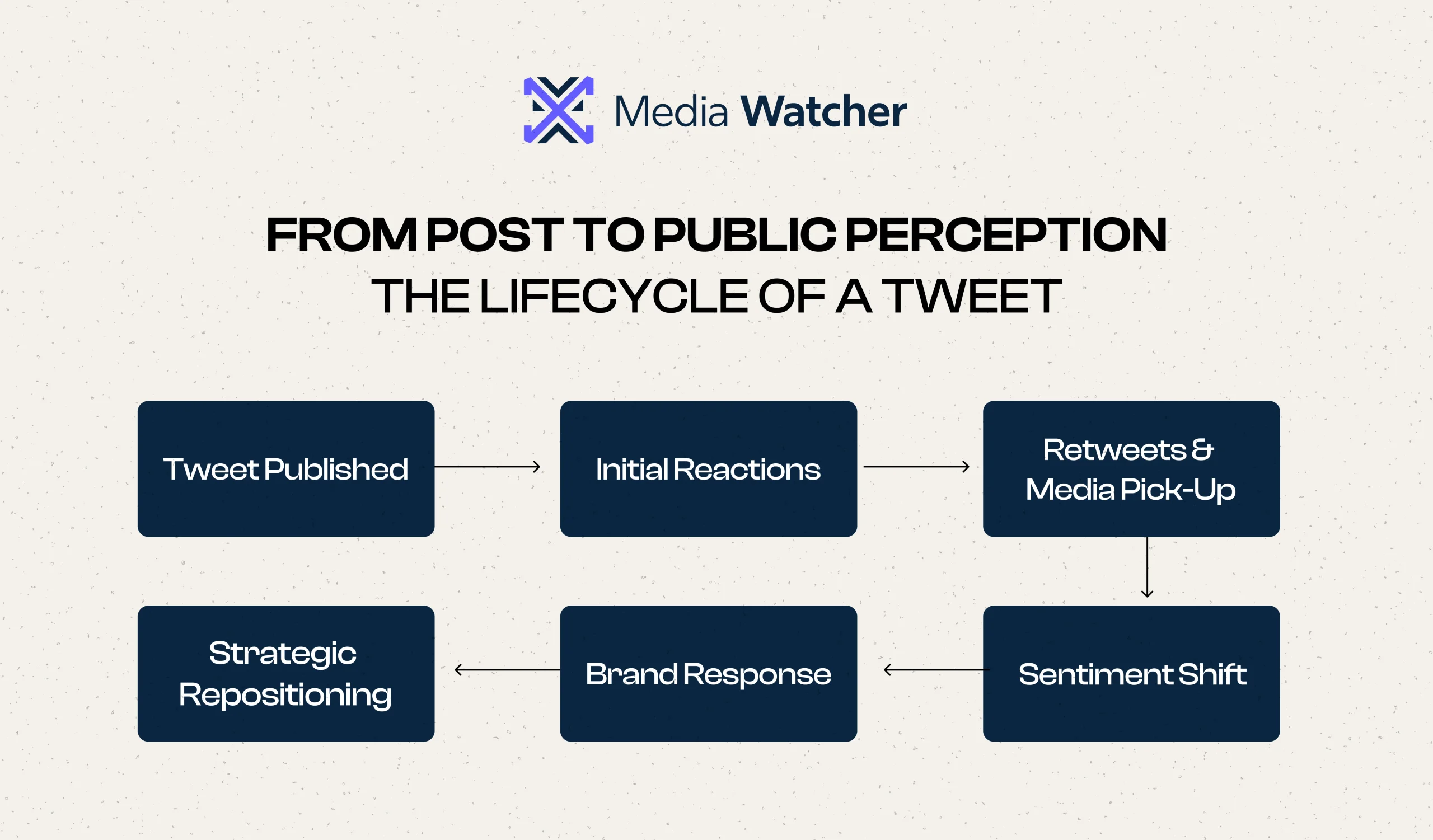
What are the Applications of Twitter Sentiment Analysis
Twitter offers unfiltered and spontaneous reactions that reflect how the user truly feels about an activity or an entity. Some of the critical applications of Twitter sentiment analysis are:
- Campaign Optimization: Brands, government entities, and event stakeholders can understand user preferences and emerging needs by assessing tweet feedback, allowing organizations to identify which product features, policies, or strategies require improvement.
- Competitive Benchmarking: Sentiment examination of tweets offers critical insights into how the audience actually feels about the competitor’s offering. In this way, organizations can identify industrial opportunities and gaps in real-time.
- Crisis Identification: Automated X sentiment monitoring facilitates detection of negative sentiment spikes in order to swiftly respond to the emerging issues and prevent backlash from spreading the media channels in real-time.
How to Get Twitter Data for Sentiment Analysis? Tools and Techniques
Acquiring the Twitter information for sentiment examination is like exploring the gateway to real-time public discourse. Moreover, the scope of Twitter sentiment analysis is far more than just the manual monitoring of public thoughts.
It’s about listening to and tracking diverse voices speaking all around the globe, in the form of threads and memes in real-time. Primarily, there are two twitter sentiment analysis tools that are used to actively acquire data from Twitter for a comprehensive analysis of different sentiments.
APIs of Twitter
Oftentimes, this official tool provided by Twitter is basically considered the backstage pass for analysts and researchers to systematically acquire the desired data.
Twitter’s API allows researchers to tailor their assessment queries based on various hashtags, keywords, language, or even geolocation.
Fact: Twitter’s application programming interface provides researchers with access to over 10 million tweets per month.
In spite of such extensive Twitter coverage, this particular process requires professional and technical skills to analyze global data in real-time and cannot be utilized by most brands that want to mitigate critical business and reputational moments.
Third-Party Twitter Monitoring Solution:
Not every business is equipped to manage the operational complexity of working directly with Twitter’s API. For researchers and marketers who are not familiar with such technicalities, third-party Twitter sentiment monitoring tools are the way forward.
Such forums strengthen the assessment of sentiments expressed in tweets by apprehending the emotional aspects of global tweets on a specific trend in real-time. This way, businesses can track the narrative and examine its evolution while recognizing all the entities involved in the event.
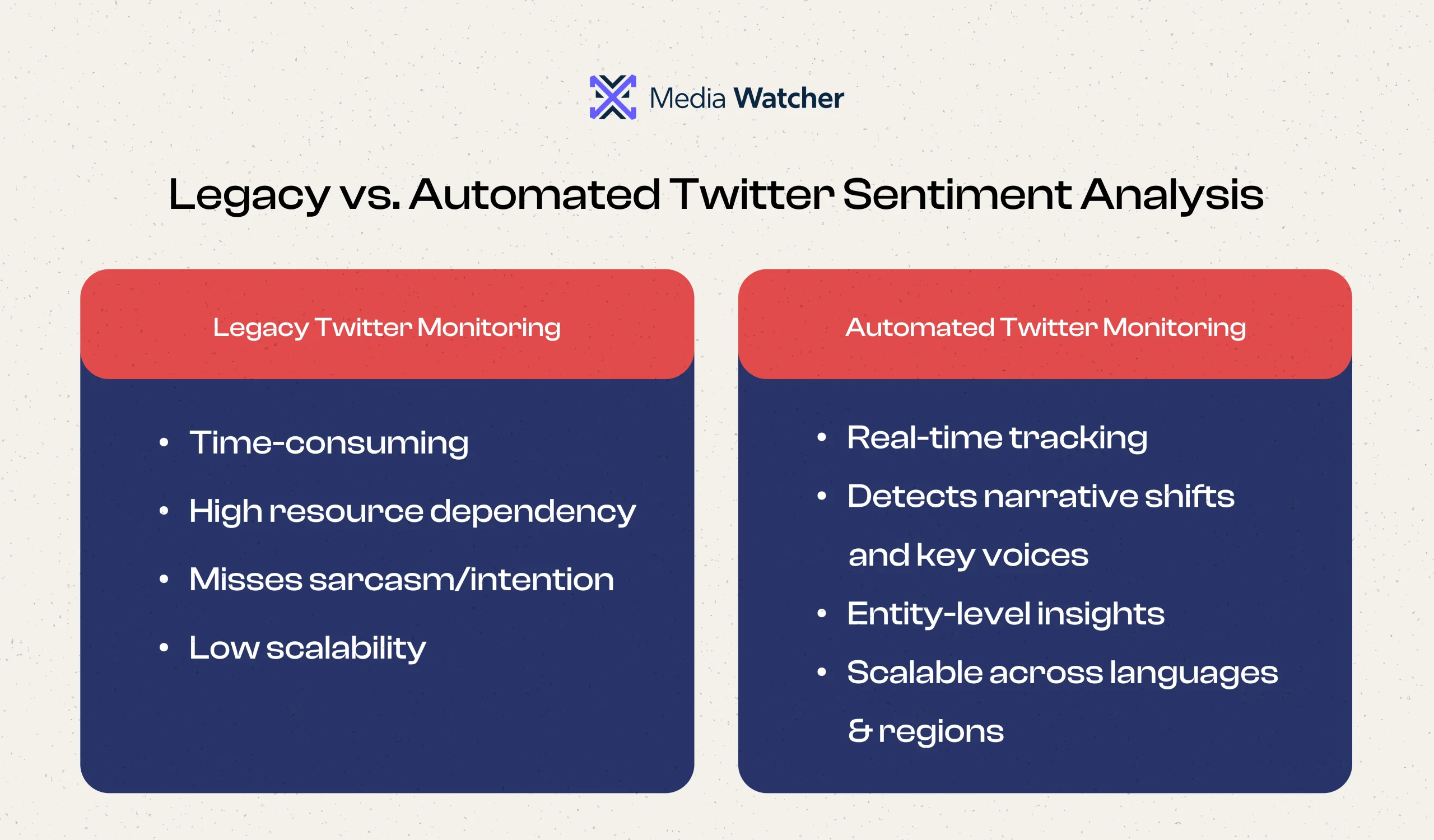
Twitter Sentiment Analysis Improving Brand Strategies
Very often, Twitter sentiment analysis enables brands to get quick feedback on their products and feature roll-outs. This is evident from the following example:
Apple faced criticism for introducing push-style promotional messages via its Apple Pay Wallet. On Twitter, users expressed their concerns and called it an unwanted ad invasion. Within hours, these tweets trended globally, especially among digital privacy advocates. Such events highlight the need for early narrative detection before the crisis intensifies to improve organizational strategies.
This case is one of the many instances that underscore Twitter’s unmatched influence on broader conversations. Twitter is the central social platform when it comes to understanding the overall hype related to a controversy or an event. The signals embedded in the sentiment of tweets play an essential role in sharpening business strategies. Here is the breakdown of how automated and real-time Twitter sentiment analysis strengthens brand strategy development and profitability:
- Sentiment analysis, when done on the entity level, allows brands to identify and alleviate negative sentiments before a certain tweet goes viral around all major social platforms and causes online outrage.
- By examining the tweets related to the competitors, brands can identify their strengths and weaknesses, which ultimately helps in developing strategic campaigns that are likely to align perfectly with their targeted audience preferences and cover the market gaps.
- Various brands have crafted successful products by generating polls on Twitter. The sentiments and engagement with these Twitter polls allow brands to develop products that resonate with their audience’s desires and requirements.
- States and public institutions can utilize sentiment analysis to gauge citizens’ reactions to policy rollouts, allowing for better public engagement.
- Research institutes and journalists benefit from X sentiment assessment as it enables them to investigate public narratives and validate facts around controversial or trendy topics.
Suggested Read: Strengthen Brand Reputation With Customer Sentiment Analysis
Decode More Than Just Twitter Hashtags With Media Watcher
Every single tweet is a data point for businesses to make decisions that are effective. Therefore, analyzing the sentiments expressed in such viral tweets is pivotal to outperforming the competitors.
Media Watcher takes the Twitter sentiment analysis to the next level as it doesn’t just provide wholesome analysis but also an entity-level analysis, revealing the true picture of an event. Not only that, but its real-time media monitoring and social media listening allow organizations to stay ahead of future trends by analyzing the tone of opinions being shared by different stakeholders.
- Media Watcher’s cross-platform channel coverage provides a detailed overview of an underlying trend or controversy across all the major social media platforms, including Twitter.
- It helps the organizations track the evolving opinions of the audience through the real-time assessment of sentiments across entity, case, and news levels.
- By keeping track of trendy tweets, Media Watcher extracts relevant data from around the globe to provide a customized media monitoring approach for its users.
FAQs
How to do Twitter sentiment analysis?
To perform Twitter sentiment analysis, start by collecting relevant tweets using Twitter’s API or third-party sentiment monitoring tools. Afterward, rule-based or machine-learning modules analyze emotional tones of tweets to detect intention and entity-level sentiment in real-time.
Is Twitter good for sentiment analysis?
Yes, Twitter is an ideal platform for sentiment analysis due to its high engagement and vast volume of public conversations. It provides a rich stream of unfiltered opinions on brands, policies, and events, which help organizations understand the public mood and predict narratives.

